Cattle grazing cereal rye cover crop near Tecumseh on April 9, 2016.
By Rebecca Clay, University of Nebraska Experiential Fellow
Cover crops provide on-farm and environmental services such as weed suppression, improved nutrient cycling, decreased soil compaction, and decreased erosion potential, among other benefits (Figure 1). Cover crops also may provide high quality livestock feed without reducing the delivery of other benefits.
By grazing cover crops, farmers can alleviate grazing stress on existing pastures, allowing them to become more productive. Other potential benefits of grazing cover crops include reducing feed expenses and decreasing labor required to haul manure and harvest and store additional feedstuffs.
In addition to the potential for economic gains of grazing cover crops, the soil and ecosystem also benefit from having a living cover when the soil would otherwise be fallow. Cover crops leave abundant root biomass even when grazed, which improves soil properties. Manure from the grazing livestock can add and diversify biological activity and help close the on-farm nutrient cycle (Figure 2).
Impacts of Compaction
Soil compaction occurs when pressure on the soil destroys soil structure and reduces the amount of pore space between soil peds. The result is a denser, more compressed soil (Figure 3). The lack of structure and pore space reduces water infiltration, gas exchange, and root penetration. In turn, these reductions can reduce N and K uptake and delay planting, ultimately resulting in lower yields.
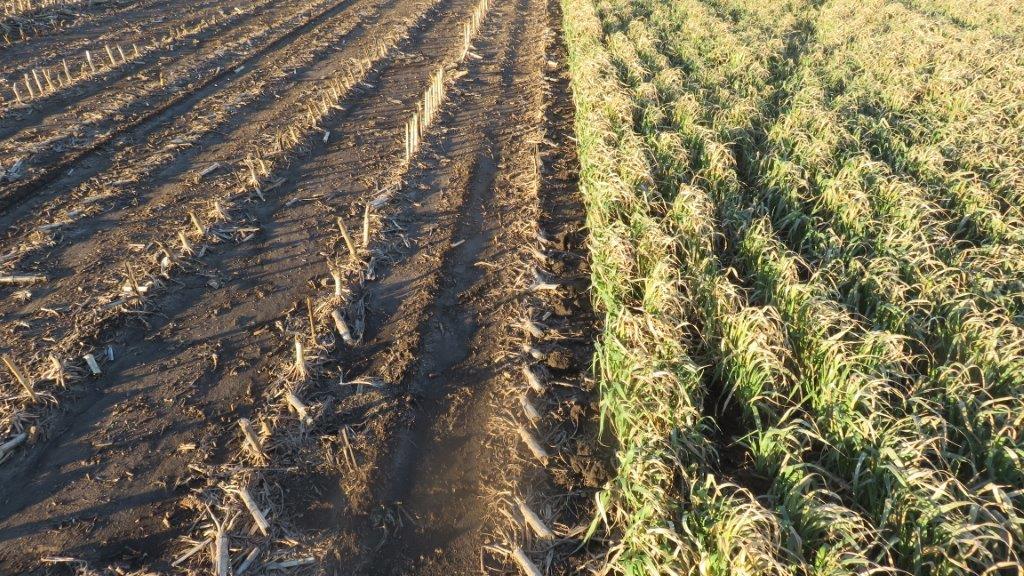
Figure 1. Cover crops provide protection from wind and water erosion. The soil on the left without cover crop is susceptible to erosion unlike the soil on the right with cover crop.
Studies in Wisconsin found that fields with compacted soils yielded only 50% of what a non-compacted soil would yield.
Beside the impact to the following crop, compacted soil is more susceptible to runoff and erosion. Compaction has severe effects on the soil and crop production, so we need to explore if and how cattle grazing causes soil compaction.
Cattle and Compaction
In the spring when cattle might be released to graze cover crops, a typical cow might weigh 1000 lb. Distributed over four hooves, each hoof might have 250 lb pressing into the soil. As the cow walks, its full weight is distributed over only two or three hooves, resulting in 300-500 lb over a few square centimeters of soil. This heavy force can cause visible changes to the soil (Figure 4). The ramifications of this force can be exacerbated by a few factors.
Excess Walking
If the source of water (and supplemental feed, if applicable) for cattle is located far from the area being grazed, the cattle will walk over more soil, compacting it in the process.
Moisture, Soil Temperature
Excess water in the soil makes the links between soil aggregates weaker, so soil structure is more easily damaged under pressure. Grazing cover crops when the soil is wet increases the risk of compaction. However, if the soil were frozen when the cover crops were grazed, the soil aggregates would be better able to withstand pressure.
Field Locations
Cattle tend to gather near fencerows, so areas near the fence tend to be more compacted. The same can be said for areas near natural water sources such as creeks. The soil in these areas is typically already moist, further compounding the risk of soil compaction.
Once we know the mechanisms behind compaction due to cattle grazing, we can delve into measuring compaction and studies on the subject.
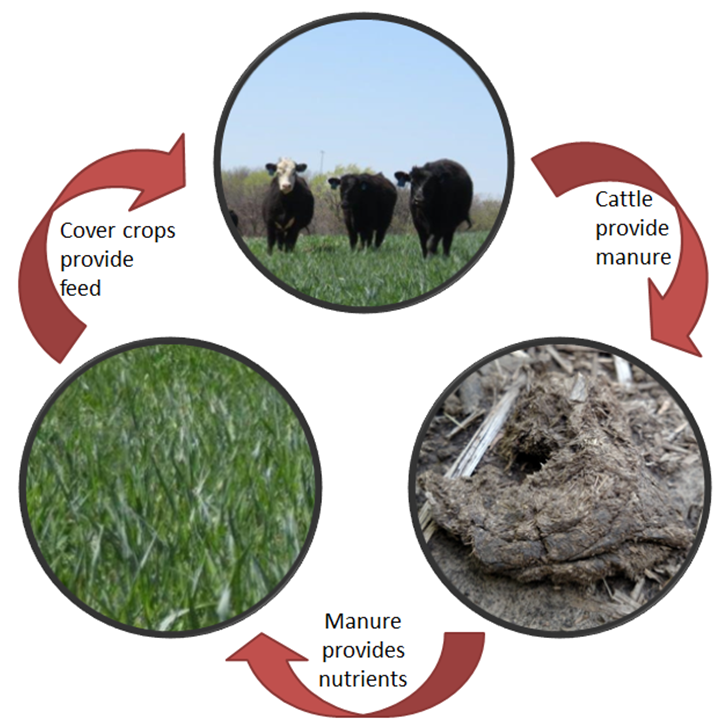
Figure 2. Grazing cover crops helps to close the on-farm nutrient cycle. Cattle remove nutrients by eating cover crops, then deposit plant-available nutrients in the form of manure. The following cash crop and cover crop uptake the nutrients, closing the cycle.
Can I Graze Cover Crops in Any Cropping System?
In short, no. Not all cropping systems allow for the adequate biomass accumulation that is required to graze cover crops.
Cropping systems with early harvest dates—such as hybrid seed, corn silage, and wheat production—provide more growing degree days in the fall than later harvest dates, lending themselves especially well to cover crop growth in the fall.
For this reason, current research on the subject at University of Nebraska-Lincoln, is focusing on establishing and grazing cover crops after corn silage harvest.
On the other hand, cropping systems with later harvest dates such as soybean and corn grain lend themselves to spring forage production, though different species of cover crops should be used in each of these.
A Nebraska Extension NebGuide, Annual Cool-Season Forages for Late-Fall or Early-Spring Double-Crop, provides greater insight into which cover crops should be used in each type of cropping system.
The economic and environmental advantages of grazing cover crops are promising, but some farmers are concerned that allowing large ruminants such as cattle to graze cover crops could compact the soil, causing yield declines in future growing seasons. Compaction can greatly hinder a soil’s ability to sustain crops and provide ecosystem services.
Measuring Compaction
Researchers typically use two types of measurements to quantify compaction: bulk density and penetration resistance. Bulk density measures how dense or compact the soil is. Penetration resistance measures how easily roots are able to penetrate the soil at different depths. Researchers push a penetrometer to different depths and record the force exerted to reach each depth. These two indicators were used to measure compaction in the studies described below.
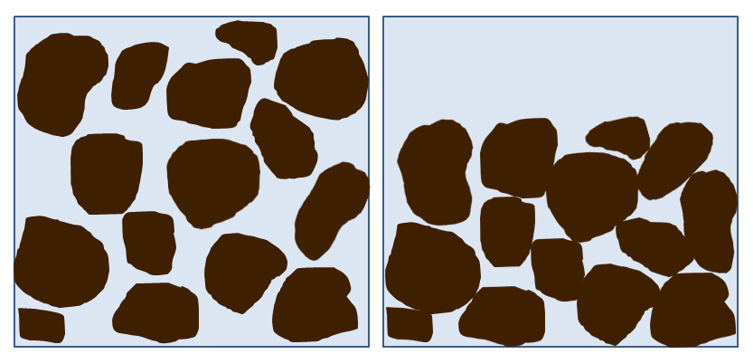
Figure 3. The soil on the left is a healthy soil with about 50% solids and 50% pore space. The soil on the right is compacted and would have limited infiltration, gas exchange, and root penetration.
What's Been Found
An extensive study in Georgia by the USDA-ARS found that grazed cover crop treatments resulted in soils with slightly higher bulk density than non-grazed treatments after six years. The same study found that grazing cover crops led to greater soil penetration resistance. A similar study completed in Venezuela found that after several years grazing cover crops increased penetration resistance but not bulk density.
A UNL research group led by Humberto Blanco is studying how grazing cover crops affects soil properties and crop yields. Using four research sites in Nebraska (Figure 5), Blanco and colleagues are evaluating three treatments:
- control (no cover crop),
- non-grazed cover crop, and
- grazed cover crop.
Cover crops were planted in early fall after corn silage and grazed in the spring for about six weeks.
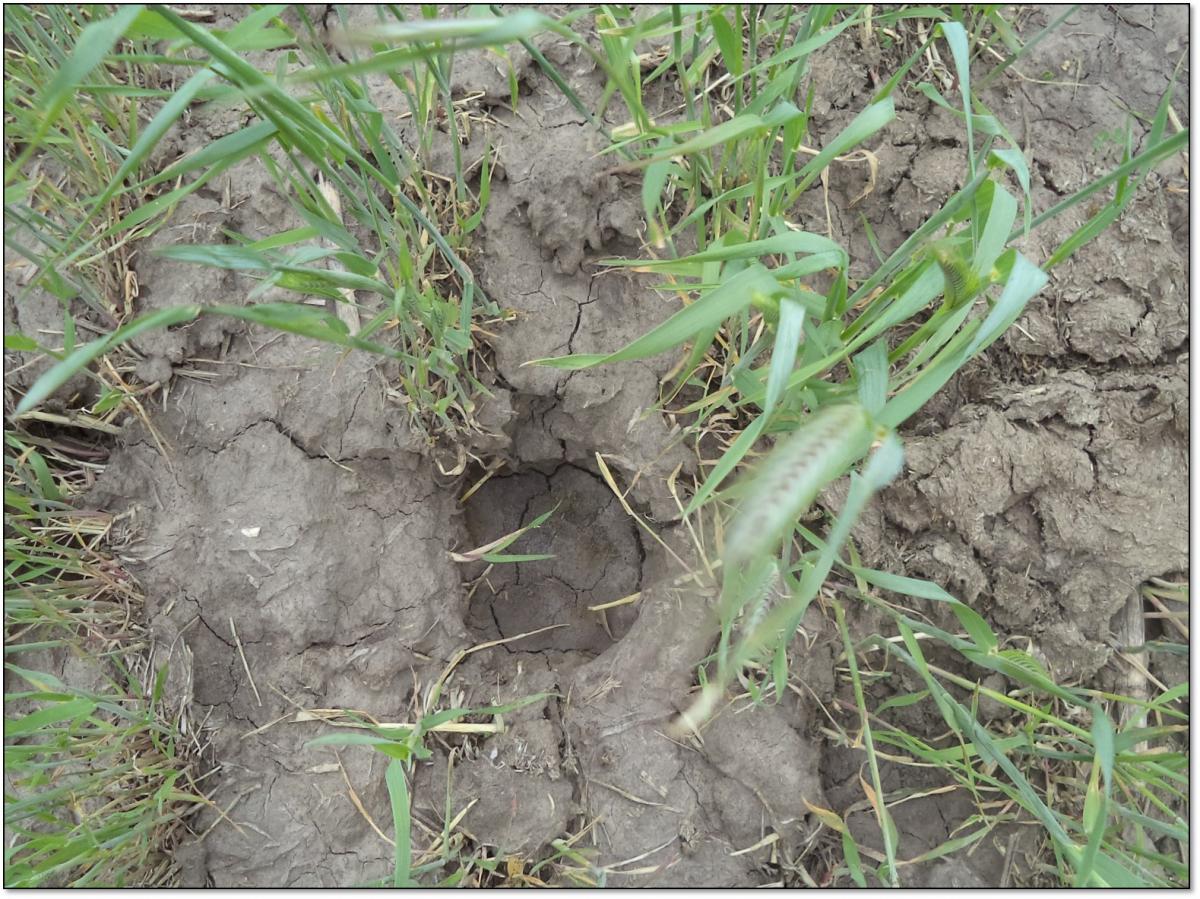
Figure 4. The force of cattle hooves can cause "pugging" or localized compaction if the soil is wet when grazed.
After one year of the experiment, the data from the four sites shows that grazing cover crops did not increase penetration resistance and bulk density of soil.
From the literature review and preliminary data, we notice trends that grazing cover crops could cause some soil compaction after several years of the treatment, but not within the first few years. The increased compaction observed in Georgia and Venezuela did not reach the critical level at which it would impede crop growth. This suggests that farmers can benefit from grazing cover crops without significant detrimental soil and yield impacts. Still, potential risks of soil compaction from grazing cover crops should be monitored on a site-specific basis.
Reducing Compaction Risks
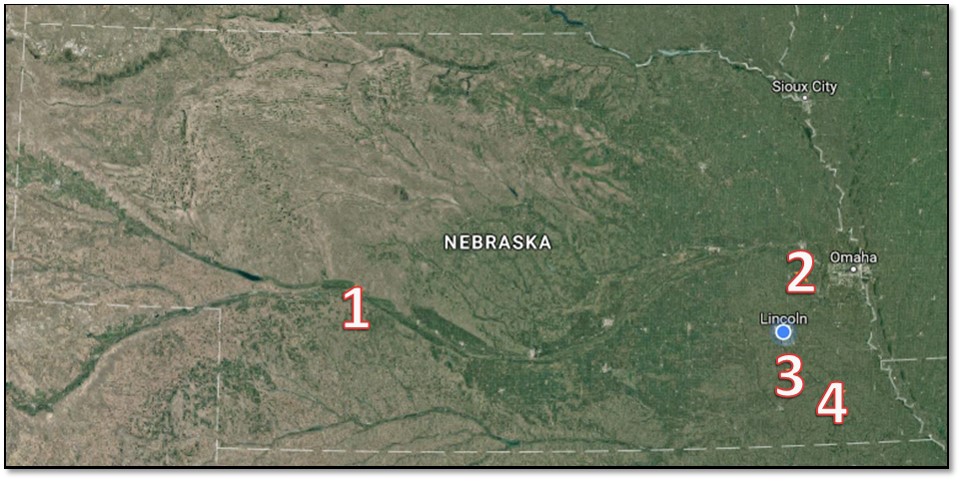
Figure 5. Map of Nebraska showing the four experiment locations (1. North Platte, 2. Mead, 3. Firth, and 4. Tecumseh).
- Do not permit livestock to graze on wet soil, which is especially susceptible to compaction. Only allow livestock to graze cover crops on dry or frozen soil.
- Only graze when you have adequate feeding potential, and do not graze all of the cover crop residue. USDA NRCS recommends that you wait to graze cover crops until after they have grown at least eight inches and that you remove the livestock once they have grazed the biomass to four inches above the soil surface.
- Keep livestock from grazing cover crops in vulnerable parts of the landscape such as highly erodible land and land close to water sources.
Additional Resources
To learn more about grazing cover crops in Nebraska, see:
- Annual Cool-Season Forages for Late-Fall or Early-Spring Double-Crop. Mary Drewnoski and Daren Redfearn. NebGuide Publication G2262.
- Effect of Grazing Double-Cropped Annual Forages on Soil and Crop Yields. Mary Drewnoski and Humberto Blanco. NebGuide Publication G2264.
- High Quality Feed at a Good Price: Oats and Turnips for Fall Grazing. Mary Drewnoski.




